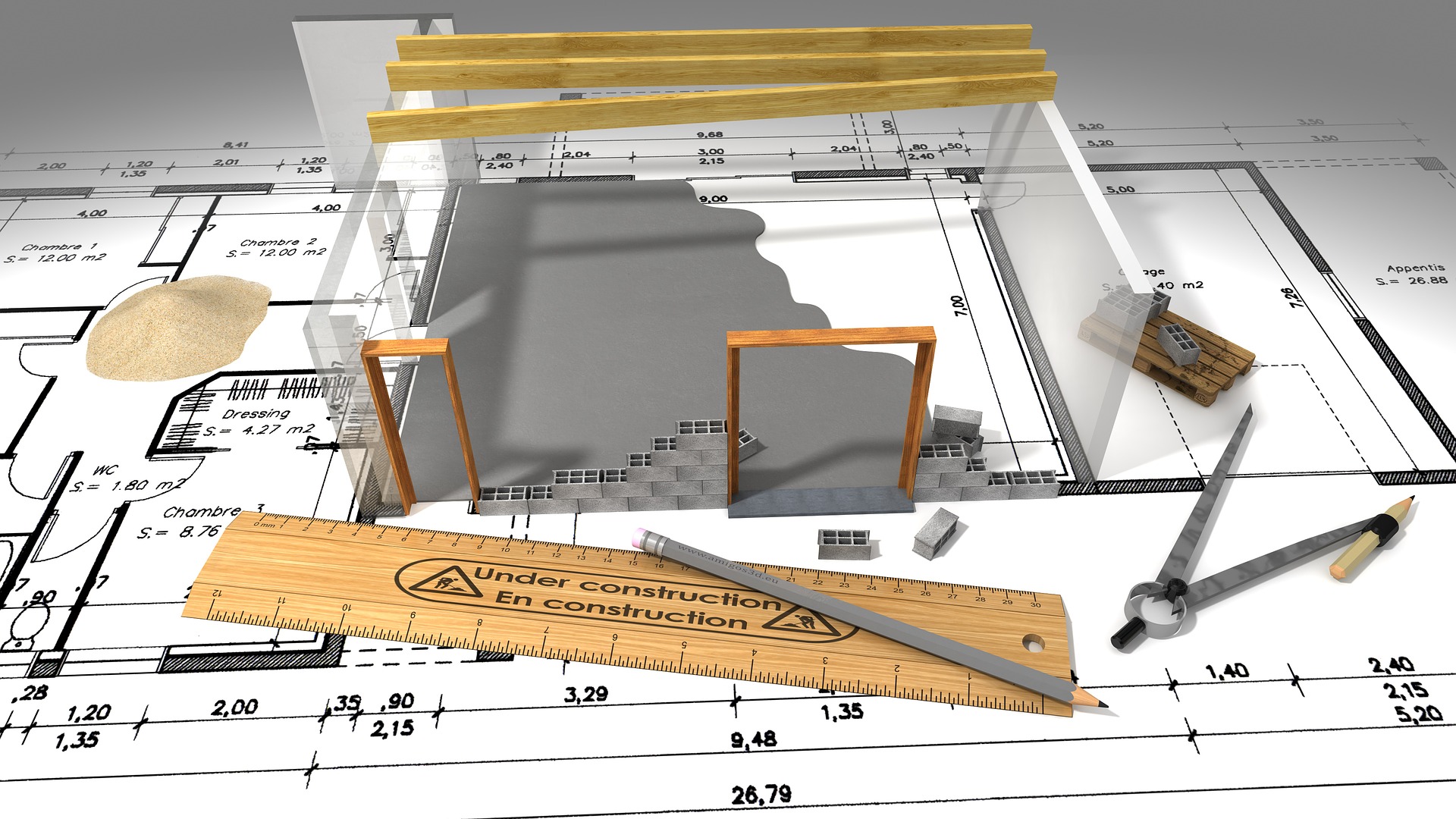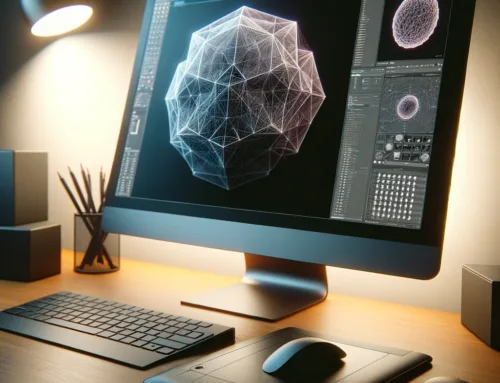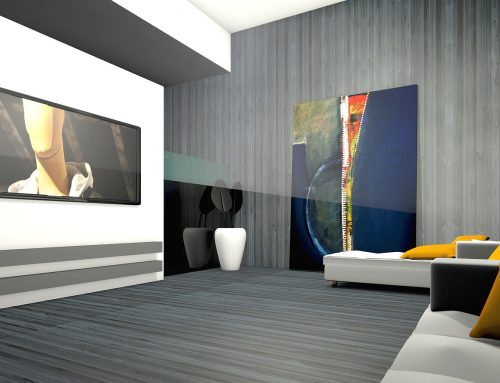Warum sich Fotografen PhotoWorks etwas genauer ansehen sollten.
Bei dem folgenden Beitrag handelt es sich um einen Gastbeitrag des weltweit populären Fotografen Stanislav Ostrovski.
Es gibt eine Menge Bearbeitungssoftware zur Auswahl, aber PhotoWorks ist ein Fotoeditor für den PC, der sich von der Masse abhebt. Professionelle Fähigkeiten kombiniert mit einer unglaublich einfach zu bedienenden Benutzeroberfläche machen diese Bildbearbeitungssoftware zur besten Wahl für Fotografen, die auf ein weniger kompliziertes System umsteigen möchten, ohne die Qualität zu beeinträchtigen.

Als Fotograf habe ich viele verschiedene Softwareprodukte verwendet. Als ich mich entschied, PhotoWorks auszuprobieren, war ich daran interessiert, welche Vorteile es gegenüber ähnlicher Software haben könnte, und im Allgemeinen wollte ich einfach nur etwas anderes ausprobieren. Das wichtigste Element in meinem Workflow ist die Qualität, also wusste ich, dass ich das in meiner PhotoWorks-Studie überprüfen würde. Auch die Geschwindigkeit ist entscheidend – meine Kunden erwarten, dass sie ihr Produkt schnell erhalten. Ich habe viel Zeit damit verbracht, automatische Funktionen und Ein-Klick-Effekte auszuprobieren, um zu sehen, ob dies etwas ist, das einen Unterschied in meiner Arbeit machen könnte.
Ich war auch auf der Suche nach einer Fotobearbeitungs-App für den PC. Es scheint, dass ein Großteil des Marktes für Fotobearbeitung in Richtung Mac-Anwender ausgerichtet ist, also habe ich die Chance genutzt, Software zu lokalisieren, die speziell für PC-Anwender entwickelt wurde. Im Folgenden werde ich Ihnen erklären, wie PhotoWorks funktioniert.
Automatische Bildbearbeitung.
Es gibt viel Potenzial für schnelle Bearbeitungen in dieser Software, was für mich eine enorme Zeitersparnis bedeutet. Die allererste Registerkarte, die ich ausprobiert habe, war die Registerkarte Verbesserung. Sie enthält die meisten der ersten Änderungen, die ich an jedem Bild vornehmen würde, das ich verarbeite. Ich war angenehm überrascht zu sehen, dass der Button Autokorrektur gute Arbeit geleistet hat, um die Änderungen zu identifizieren, die mein Bild benötigte. Nach dem Klicken auf den Button erscheint ein Slider, mit dem Sie den Grad der Korrektur, den Sie im Bild sehen, steuern können.
PhotoWorks hat die Genres meiner Bilder selbst identifiziert. Die Anwendung wusste, welche Bilder Porträts und welche Landschaften waren, was es erleichterte, in kurzer Zeit die richtigen Änderungen vorzunehmen. Ich mag eine gewisse Kontrolle über meine Fotobearbeitung, also habe ich Wert darauf gelegt, auch jeden der Verbesserungsregler zu verwenden, um zu sehen, welche Auswirkungen sie hatten. Es gibt mehrere zur Auswahl. Im Hauptmenü sehen Sie:
-
Sättigung
-
Lebendigkeit
-
Klarheit
-
Temp
-
Tönung
-
Exposition
-
Kontrast
-
Highlights
-
Schatten
-
Weiße
-
Schwarze
Hier gibt es also so ziemlich alles, was ich vom Basic-Panel meines üblichen Bildbearbeitungsprogramms erwarten würde. Es gibt auch eine spezielle Registerkarte Farben im Abschnitt Verbesserung, die es mir ermöglicht, bestimmte Farbtöne zu optimieren und die Helligkeit und Sättigung jedes einzelnen zu erhöhen oder zu verringern. Außerdem gibt es eine ganze Registerkarte zur Einstellung der Schärfe.
PhotoWorks trifft in diesem Abschnitt des Editors alle schwierigen Entscheidungen für Sie. Während ich einen überraschenden Grad an Kontrolle über die Farb- und Tonbereiche hatte, wirkten die Änderungen in einer Einheitsgröße sehr gut auf meine Arbeit. Zudem ist PhotoWorks wirklich gut darin, Ihnen zu ermöglichen, die Menge jedes Effekts zu wählen, der in Ihrem Bild erscheint, Um einen Schritt weiter zu gehen und den Bearbeitungsprozess überschaubarer zu gestalten, empfehle ich, die Portrait Magic-Funktion auszuprobieren. Darüber werde ich als nächstes etwas näher eingehen.
Portrait Magic.
Portrait Magic ist eine spezielle Funktion auf der Registerkarte Retusche, mit der Sie mehrere Bearbeitungen an Ihrem Portrait gleichzeitig vornehmen können. Es führt auch eine leistungsstarke Gesichtserkennungstechnologie in Ihren Workflow ein. Ich war sehr beeindruckt, dass PhotoWorks nicht nur einzelne Gesichter, sondern auch Gesichtszüge wie Lippen und Augen erkannte. Ich konnte den Lippen eines Motivs Farbe verleihen, ohne andere Personen auf dem Bild zu beeinträchtigen. Ein anderes Subjekt brauchte leicht aufgehellte Zähne. Mit dem Schieberegler Zahnweiß konnte ich dem Lächeln einen kleinen Schub geben, ohne das andere Lächeln in meinem Bild zu stören, das bereits perfekt weiß war.
Es gibt mehrere Stile zur Auswahl, die verschiedene Themen behandeln, die Sie in einem Portrait finden können. Sie können den zusätzlichen Glanz auf dem Gesicht Ihres Motivs mit nur einem Mausklick entfernen oder seine Haut glätten. Sie können auf Wunsch detailliertere Änderungen im Bereich „benutzerdefinierte Einstellungen“ vornehmen, aber die Möglichkeit, das Aussehen eines Portraits in weniger als einer Minute drastisch zu verbessern, ist für mich ein gutes Verkaufsargument.
Einfaches Background-Switching.
Eines meiner persönlichen Probleme mit einem typischen Bildbearbeitungsprogramm für den PC sind die Auswahlwerkzeuge. Obwohl sie korrekt sind, finde ich sie langweilig und zeitaufwendig. Das bedeutet, dass, wenn ich einen Hintergrund in einem meiner Bilder ändern muss, es viel Zeit in meinen Workflow einbringt (und manchmal auch viel Frust). Ich war gespannt, ob PhotoWorks diesen Prozess für mich vereinfachen könnte.
Ihr Ansatz ist ein wenig anders als das, was Sie wahrscheinlich mit Ihrer üblichen Fotobearbeitungsanwendung für den PC erlebt haben. Auf der Registerkarte Tools wählen Sie einfach das Tool Hintergrund ändern aus. Von dort aus skizzieren Sie die allgemeine Form Ihres Motivs mit dem grünen Objektpinsel und machen das Gleiche an der Außenseite Ihres Motivs mit dem roten Hintergrundpinsel. Anschließend entfernt PhotoWorks automatisch den Hintergrund basierend auf den beiden Konturen, die Sie ihm gegeben haben. Für Dinge wie Haare und lose Kleidung müssen Sie im nächsten Schritt einige Anpassungen vornehmen, aber PhotoWorks leistet gute Arbeit, um die richtigen Kanten die meiste Zeit zu finden. Zum Beispiel konnte ich den Hintergrund hinter einem Foto eines Cellos entfernen, indem ich lediglich eine Linie in der Mitte des Cellos mit dem Objektpinsel und ein Oval an der Außenseite des Cellos mit dem Hintergrundpinsel zeichnete. Können Sie sich vorstellen, wie lange es gedauert hätte, es Klick für Klick auszuwählen?
Fotoeffekte für Tage.
Über 150 Effekte können einen Fotografen lange Zeit beschäftigen, und ich war sehr daran interessiert, mit den verschiedenen PhotoWorks-Optionen herumzuspielen, um zu sehen, ob es etwas gibt, das ich professionell nutzen kann. Es gibt mehrere Kategorien von Effekten, mit denen man spielen kann, und ich habe ein paar aus jeder Gruppe ausprobiert. Einige von ihnen waren einfach nur spaßig, während ich mir bei anderen gut vorstellen könnte, Sie konkret in bezahlten Projekten einzusetzen. Das Beste daran ist, wenn Sie einen Effekt auswählen, sehen Sie sofort einen Schieberegler unter Ihrem Bild, mit dem Sie bestimmen können, wie viel von dem Effekt Sie sehen möchten. Ich mag es, meine Effekte individuell anzupassen, ohne auf komplizierte Ebenenmasken zurückgreifen zu müssen.
Sie können sich eine Vorschau der einzelnen Effekte ansehen, um eine Vorstellung darüber zu bekommen, wie Ihr Bild mit diesem Effekt bei voller Intensität aussehen wird, bevor Sie darauf klicken. Das macht es viel einfacher, einen Effekt auszuwählen, der meinen Bedürfnissen entspricht, ohne durch eine Liste von Effektnamen auf meinem Laptop zu scrollen und zu erraten, welchen man einen Look hat, den ich möchte.
Schnellkorrekturen für Objektverzerrungen.
Ich liebe meine Weitwinkelobjektive, aber ich habe oft Verzerrungsprobleme, wenn ich sie benutze. PhotoWorks verfügt über ein ausgezeichnetes, problemloses System zur Behandlung von Verzerrungen und perspektivischen Problemen. Suchen Sie auf der Registerkarte Tools nach dem Menü Geometry. Ich liebe es, das Kontrollkästchen „Show Grid“ zu aktivieren, damit ich weiß, wann die Linien und Kanten in meinem Bild perfekt gerade waren.
Diese Funktion war sehr nützlich für einige Architekturfotografien, die ich gerade bearbeitete. Ich hatte auf einem meiner Fotos einen „fallenden Gebäudeeffekt“, den ich mit den Reglern Vertikal und Horizontal beheben konnte. Ich hatte auch eine Landschaft mit einer schiefen Horizontlinie und leichter Tonnenverzerrung, mit der ich nicht zufrieden war. Der Rotationsschieberegler hat meinen krummen Horizont kurzzeitig ausgenutzt, und ich konnte den Laufeffekt mit einem kleinen Schubs am Distortion-Schieberegler vollständig fixieren. Dank des Gitters habe ich keine Zeit damit verschwendet, mich selbst zu hinterfragen. Ich wusste, wann meine Bilder einsatzbereit waren, weil sie zu meinen Rasterlinien passten.
Pro-Level-Tools.
Man hört vielleicht „Automatic Photo Editor for PC“ und denkt, dass es sich um einen Editor für Amateurfotografie handeln muss. PhotoWorks hat eine ganze Bibliothek von erstaunlich einfach zu bedienenden Funktionen, aber es hat auch einige der Funktionen, die fortgeschrittenere Benutzer wie ich von einem Fotoeditor für den PC benötigen.
Wir werden in einer Minute zu einigen der fortgeschritteneren Funktionen kommen, aber zuerst möchte ich über etwas sprechen, das jeder Bildbearbeiter braucht: Retusche-Tools. In PhotoWorks gibt es dafür eine eigene Registerkarte Retusche. Der zugehörige Heilpinsel ist auf dem neuesten Stand der Technik, und ich konnte mit diesem Pinsel mit einer Reihe von einfachen Klicks große Schönheitsfehler in einem meiner Portraits erfolgreich entfernen. Alle Stellen, die nicht vollständig mit dem Heilpinsel gelöst wurden, bearbeitete ich mit dem Klon-Stempel.
Der Klon-Stempel bietet etwas mehr Kontrolle über die Fleckenentfernung. Ich konnte den spezifischen Teil des Bildes auswählen, der einen Punkt ersetzen würde. Sie können auch bestimmte Teile eines Fotos mit dem Anpassungspinsel übermalen, und gezielte Änderungen an Ihrem Bild vorzunehmen.
Die Verlaufs- und Radialfilter sind ein schneller Weg, um wesentliche Änderungen an Ihrem Bild vorzunehmen. Ich benutzte den Verlaufsfilter, um den Himmel in einer Landschaft, welches etwas flach aussah, etwas Farbe zu verleihen. Der Radialfilter half mir, die Aufmerksamkeit auf eine einzigartige Felsformation in derselben Lanschaft zu lenken. Diese Filter sind ziemlich flexibel und benötigen nicht viel Training, was ein großer Gewinn für diejenigen von uns ist, die keine Zeit haben, eine ganz neue Software zu beherrschen.
Ich benutzte Kurven sehr oft, um die Balance von Licht und Farbe in meinen Bildern anzupassen. Während ich Ein-Klick-Funktionen liebe, die Zeit sparen, brauche ich auch viel Kontrolle über Ton und Wert in meiner Arbeit. Das Kurvenwerkzeug von PhotoWorks hat die volle Funktionalität. Mit der Möglichkeit, jeden Farbkanal einzeln oder alle auf einmal zu bearbeiten, so dass ich nicht das Gefühl hatte, dass ich bei jeder Feinabstimmung, die ich typischerweise vornehmen würde, etwas verpasst habe. Es gibt auch Voreinstellungen, mit denen Sie Ihren Kontrast anpassen können, wenn Sie etwas Bestimmtes im Sinn haben.
Ich war gespannt, ob die Tonwertkartierung von PhotoWorks passen würde, und ich freue mich, sagen zu können, dass sie das tat. Mit einem riesigen, langen Menü von Mischmodi und mehreren zu integrierenden Texturen verbrachte ich viel Zeit im Bereich Tone Mapping. Genau wie bei Curves befindet sich oben ein Schieberegler für die Menge, mit dem Sie die Intensität Ihrer Bearbeitungen erhöhen oder verringern können.
Intuitive Benutzeroberfläche.
Einfach zu bedienende Registerkarten und vollständige Menüs machen PhotoWorks zu einem neuen persönlichen Favoriten, wenn es um benutzerfreundliche User Interfaces geht. Als ich die Software zum ersten Mal öffnete, führte mich ein Tutorial durch die Grundlagen der Navigation und brachte mich in die Bearbeitung. Als fortgeschrittener Benutzer erzählte mir das Start-Up-Tutorial das meiste von dem, was ich wissen musste, aber jedes Mal, wenn ich beim Ausprobieren von PhotoWorks Probleme bekam, klickte ich einfach das kleine Fragezeichen oben in meinem Menü, und ein hilfreicher Tipp oder ein Lehrvideo brachte mich wieder auf den richtigen Weg. Ich hätte kein Problem damit, PhotoWorks Einsteigern zu empfehlen, die sich erst kurze Zeit bisher mit diesem Thema auseinandergesetzt haben.
Probieren Sie es selbst aus.
Ob Sie nun seit Jahren ein professioneller Bildbearbeiter sind oder gerade erst anfangen, ich spreche jeden ausdrücklich meine Empfehlung aus, PhotoWorks einmal auszuprobieren. Es ist ein leistungsstarkes Bildbearbeitungsprogramm für Nutzer aller Leistungsstufen. Für schnelle Anpassungen an ein persönliches Bild ist es jetzt an der Reihe. Zudem hatte ich bei Veränderungen wir der Entfernung von Hintergründen bisher kein Problem damit, die Arbeit zu erledigen. PhotoWorks ist ein brillantes Bearbeitungsprogramm, das das Spiel sowohl für Profi- als auch für Einsteigerfotografen verändern könnte. Holen Sie sich noch heute eine kostenlose Testversion und verschaffen Sie sich davon ein Bild, wie Sie PhotoWorks in Ihrer täglichen Arbeit unterstützen kann.
Vielen Dank für Ihren Besuch.


